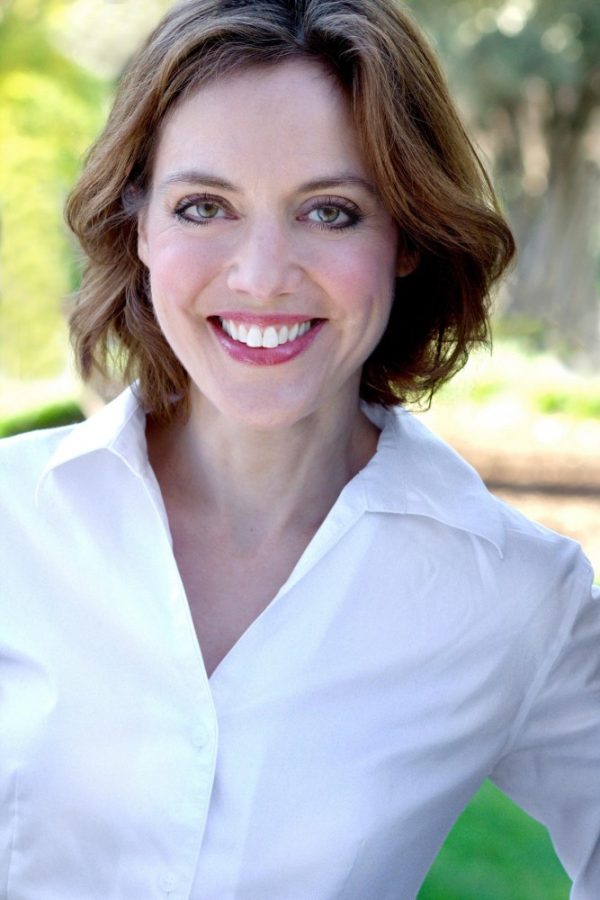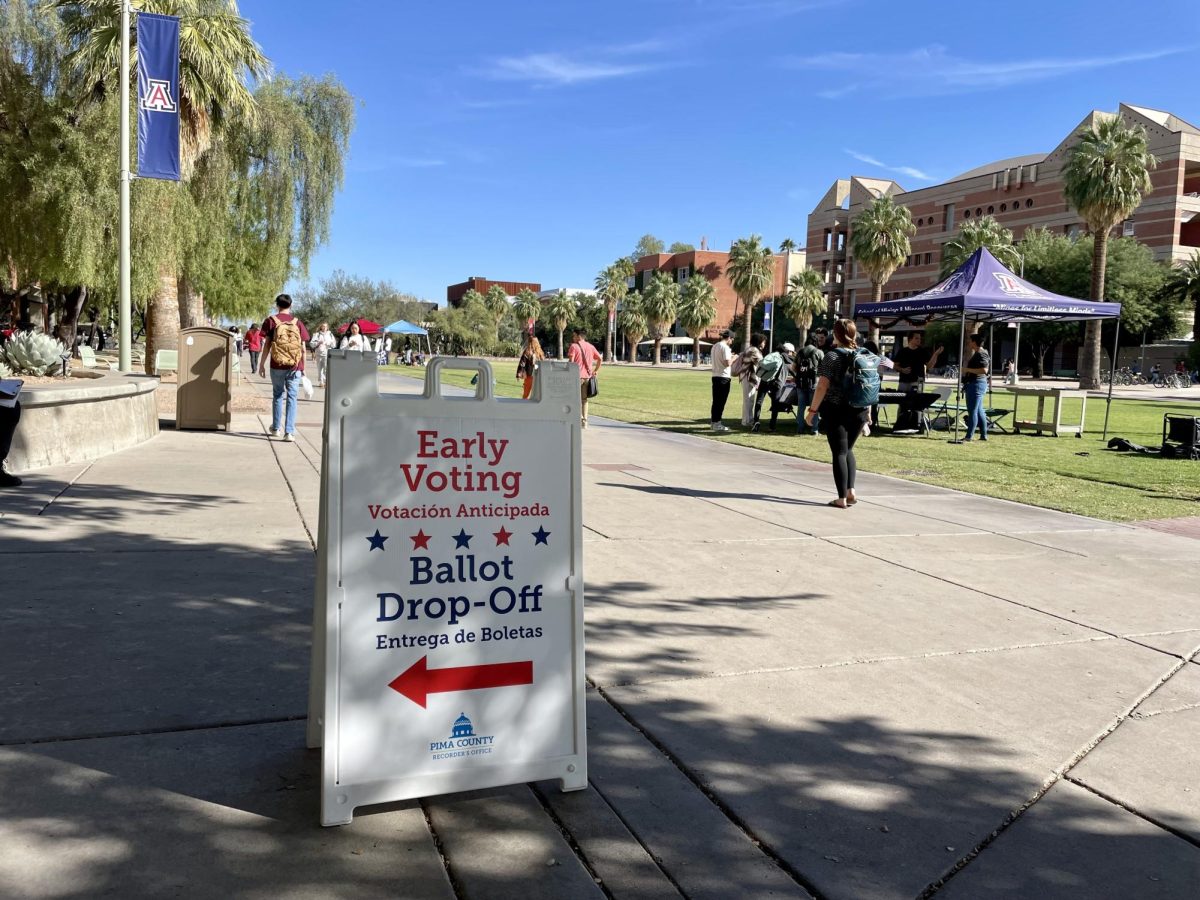Amy Mainzer, Ph.D., is an astronomer and astrophysicist. She is one of the world’s leading asteroid hunters at NASA and the host of a popular children’s show about astronomy.
In September, Mainzer will join the University of Arizona’s Department of Lunar and Planetary Sciences as a planetary sciences professor. The Daily Wildcat sat down with Mainzer to talk about her career and upcoming plans at the UA.
Daily Wildcat: What inspired you to become an astronomer and astrophysicist?
Amy Mainzer: I got interested in astronomy when I was a pretty little kid, actually. When I was probably six or seven I actually had a kid book on Greek mythology. It was just one of those little kid books that you had. At the time, of course, there was no internet, so I went to the library and I looked in an encyclopedia to look up some of the characters from the Greek myths that I liked to read about then and it turns out that most of those names have two meanings. So if you look up Perseus, you get the Greek legendary character, but you also get a constellation. And I remember looking up one of the names, it might’ve been Andromeda, and I just remember seeing a very beautiful picture of a galaxy and I thought, “Wow, that’s really cool, I want to learn more about that.” And after that, I kind of got really interested in astronomy. But I like all kinds of science.
DW: So you’re the principal investigator for NASA’s NEOWISE project, which is part of their Wide-field Infrared Survey Explorer mission and it focuses on asteroid hunting. Can you tell me a little bit about how the NEOWISE project came to fruition?
AM: So, like a lot of NASA missions, NEOWISE is a mission that has outlived its original purpose and is onto a new mission now. It was originally designed to be the Wide-field Infrared Survey Explorer, or WISE mission, and the principal investigator was Professor Ned Wright from UCLA, where I did graduate work, and so WISE was originally designed to take a map of the whole sky at four wavelengths of infrared light, so light that is a lot redder than the reddest light that our eyes can see. And the reason for doing this was so we can learn a tremendous amount about the universe by looking at all these different wavelengths. WISE was able to do that very quickly. In about six months, it was able to accomplish its primary mission objective. So then after that, we found that it was actually quite useful in looking for asteroids and comets, so that’s when it became the NEOWISE mission, the Near Earth Object-WISE — we love our acronyms at NASA— and it’s still orbiting the Earth, taking data on asteroids and comets today.
RELATED: Q&A: UA graduate Ellery Page’s honor thesis highlights the interplay of neuroscience, art and poetry
DW: What are some other projects you’ve worked on at NASA?
AM: You know, I’ve been really lucky to work on a variety of different projects, and one of them that I’m really happy about is the Spitzer Space Telescope. That is a telescope that is also using infrared red to look at the universe, but instead of a wide-field mapper, it’s more of a zoom lens. It’s good at taking very detailed, close-up pictures of stars and planets and galaxies in infrared light, and that telescope is nearing the end of its life. It actually launched in 2003 and it’s slowly drifting away from the Earth, but it’s done some amazing science. It’s gotten to see all kinds of things about the temperatures of exoplanets — planets that orbit stars other than our own — and it’s learned about the formation of galaxies and how they assemble. Lots of other things like that. I’m very happy I’ve gotten to build a little piece of that.
DW: You’re also the host of a PBS Kids program, “Ready Jet Go!” How did you get involved with that project?
AM: One of the things I’m really, really excited about is trying to get other kids excited about science. In fact, it’s really easy; kids are excited about science. It’s just a matter of providing them more opportunities and letting them really know that science is truly for them too, wherever they are. So in my case, it was just kind of a question of finding the right folks to work with and to do some of that outreach work. I knew a friend of a friend was looking for someone to serve as a science adviser on this show and to host some its live-action segments, so when I met up with the folks at “Ready Jet Go!”, I just was immediately struck by how excited they are teaching science to kids and making not just TV, but TV that has a purpose and a mission to educate. So yeah, it’s been a blast. I really like working with them.
DW: You start work with the UA in September as a professor of planetary sciences. Is this your first position as a professor?
AM: Yes, so it’s definitely a big change for me! I spent my career so far working with a company, Lockheed Martin, on the Spitzer Space Telescope and also as a staff scientist — I’m a senior research scientist here at the Jet Propulsion Laboratory and I’ve been on the staff since 2003. So, yeah, I’m really looking forward to being back at a university. I haven’t been at a university since graduate school. So it’ll be a fun change.
RELATED: Q&A: UA Director of Bands is a recognized guest at Carnegie Hall
DW: What are you most looking forward to doing in your classes this upcoming semester?
AM: Well, I’m going to start off teaching this semester because I won’t be there in time to start, but the thing I’m really looking forward to doing is working with students at all different levels and that’s something that’s kind of a new dimension for me and I’m really excited about it. I’ve been working with elementary kids for the PBS show, and of course we have research interns here at JPL, but to get the opportunity to work with some of the graduate students and undergrads and post-docs at the UA is really exciting to me.
DW: And finally, what is one thing you want your students to know about you before classes start?
AM: That I like to roller skate!
Follow Sadie on Twitter















